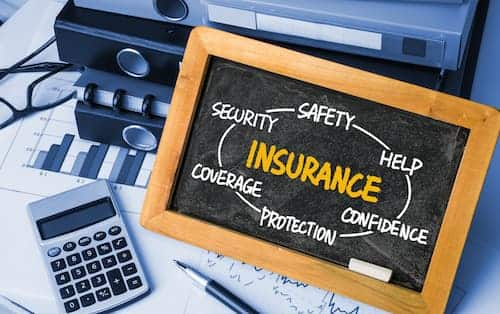Preparing for your life insurance medical exam
The results of your medical exam for life insurance are crucial to obtaining affordable life insurance rates. Your exam results should confirm what you've already reported on your application. In addition, unfavorable results, like a high blood pressure reading, will likely result in higher rates.
"We're going to collect all demographic information and physical measurements," says Betsy Sears, executive vice president of laboratory strategy and sales for ExamOne, based in Lenexa, Kansas, a provider of paramedical exams to life insurance companies. "Those will be passed to the insurance company and the underwriter, which will make the risk assessment on the basis of the profile and place the applicant into an underwriting class or category."
Some types of coverage, known as simplified issue life insurance, don't require a medical exam. There is also guaranteed issue life insurance that you can get from some companies without taking an exam. However, as a general rule, if you are healthy you’ll get more coverage at a better rate by undergoing the exam
It's important to ensure the exam is accurate and that you get the best possible results so you’ll pay less for life insurance.
How to pass the life insurance medical exam
Here are some steps you can take to improve the results of your exam:
- Stay well-hydrated. Drinking water before the exam can make it easier to draw your blood, a necessary step in obtaining cholesterol readings.
- Fast prior to the exam. You should not eat for a period of four to eight hours before the exam. Even a muffin eaten an hour before the exam could result in elevated glucose levels.
- Avoid physical exercise. Take it easy and avoid rigorous workouts for 12 hours before the exam. That doesn't mean just passing on that planned marathon, but also avoiding a fast walk or a workout on an elliptical trainer. "It's better to be conservative," Sears advises.
- Refrain from alcohol. For 12 hours before the exam, avoid consuming alcohol, Sears says. "That can dehydrate you, and a lot of alcohol within 12 hours of the exam could result in elevated liver function tests, which could bump you out of a preferred category, and also lead to additional tests," she says.
- Avoid caffeine and nicotine. Applicants should avoid both coffee and smoking an hour before the test, as caffeine and nicotine elevate blood pressure. And a further word about coffee: Black coffee is OK up to an hour before the exam, but adding cream and sugar is like going off your fast. So if you're having coffee within the fast period, avoid cream and sugar.
- Get a good night's sleep. Being well-rested won't necessarily affect your exam results, but may ease "white coat anxiety" -- the tendency for some to exhibit elevated blood pressure readings during an exam.
- Limit salt and high-fat foods. For an hour before the exam, lay off the salt and fatty foods, as they may affect exam results.
- Know your medications. Generally, you'll be asked questions about your medical history during the exam, including whether you are currently taking any prescription or over-the-counter medication.
- Don’t test during your menstrual period. Female life insurance applicants shouldn't take the test when they're menstruating, as it can affect blood test results including iron levels.
"Information is power, and if that applicant is armed with all the information they need before the exam, they will feel much more comfortable and prepared," Sears says. "With this preparation, this will be a more positive experience."
Knowing you’re prepared may also help you to feel calmer during the exam, keeping your heart rate and blood pressure stable, and generally making the whole process more pleasant.
How your health affects life insurance rates
Your health has a major impact on what you pay for life insurance, and your medical exam is the main source of information about your current health. Smoking and your health history will also impact your rates. Insurance companies use categories for health status, with Prefered Plus being the best category.
Here's how your health status and whether you smoke affects life insurance rates.
Average annual premiums for a death benefit of $250,000, 20-year term policy.
| Gender, tobacco use, and health status | Age 30 | Age 40 | Age 50 | Age 60 |
|---|---|---|---|---|
| Female, non-smoker, regular | $427 | $655 | $1,423 | $3,611 |
| Male, nonsmoker, regular | $516 | $818 | $1,880 | $5,153 |
| Female, nonsmoker, Regular Plus | $335 | $507 | $1,079 | $2,794 |
| Male, nonsmoker, Regular Plus | $391 | $619 | $1,465 | $3,991 |
| Female, nonsmoker, Preferred | $268 | $406 | $883 | $2,292 |
| Male, nonsmoker, Preferred | $332 | $499 | $1,149 | $3,188 |
| Female, nonsmoker, Preferred Plus | $216 | $326 | $717 | $1,882 |
| Male, nonsmoker, Preferred Plus | $260 | $387 | $931 | $2,671 |
| Female, smoker, Regular | $1,025 | $1,880 | $4,117 | $9,300 |
| Male, smoker, Regular | $1,323 | $2,426 | $5,567 | $13,039 |
| Female, smoker, Preferred | $733 | $1,313 | $2,978 | $6,953 |
| Male, smoker, Preferred | $925 | $1,668 | $4,035 | $9,724 |
Data source: Compulife Quotation System as of August 2023.
As you can see, better health can mean savings of hundreds of dollars each year on your life insurance. And your medical exam will help determine those rates. So go in prepared to get the best price on your insurance.
Frequently asked questions
What do life insurance companies test for?
Life insurance companies test for any potential health risk to better evaluate your life insurance premiums. They test to better understand the following -
- Overall health status
- Weight and BMI
- Blood pressure
- Cholesterol levels
- Chronic conditions
- Tobacco and alcohol use
- Prescriptions and drug use
- Other lifestyle factors




